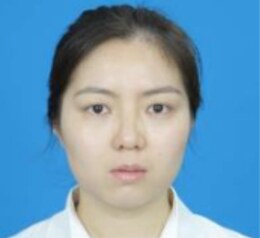Singapore Public Health & Nursing Leadership Conference
SPHC 2026
THEME: "Innovating for Tomorrow: Shaping the Future of Public Health"
 14-15 Sep 2026
14-15 Sep 2026  Singapore
Singapore THEME: "Innovating for Tomorrow: Shaping the Future of Public Health"
 14-15 Sep 2026
14-15 Sep 2026  Singapore
Singapore 
Anhui University of Science and Technology, China
Title: Exploration of S100A8 as an Intermediary Factor in Coal Workers' Pneumoconiosis and Construction of a Prediction Model
Objectives:
Coal workers' pneumoconiosis (CWP), characterized by pulmonary fibrosis, is an irreversible occupational lung disease caused by prolonged coal dust exposure. At present, it has no proven curative treatment and is a lack of sufficiently accurate early detection methods, highlighting the need for non-invasive biomarkers and mechanistic insights. This study aimed to identify core molecular mediators of CWP pathogenesis and develop a serum biomarker-based predictive model for CWP diagnosis.
Scope:
Based on 1,531 miners undergoing occupational physical examinations in a coal mine in the mining area of northern Shaanxi, China. 397 subjects were selected using the stratified cluster sampling method. They were stratified into: Control group (N=116), coal dust exposure group with normal lung function(N=135), coal dust exposure group with decreased lung function (N=90), and CWP group (N=56).
Results:
Serum S100A8 levels in the group with CWP were 2.3-fold higher than the Control group (42.85vs.18.69ng/mL, p<0.001), showing strong inverse correlation with FEV1/FVC (r=-0.67). S100A8 mediated 30.5% of dust exposure associated CWP risk, exceeding 15.6% of IL-6. The S100A8-based model achieved exceptional diagnostic accuracy (AUC=0.941, specificity=98.4%). The combined S100A8/IL-6 model improved sensitivity to 79.3% while maintaining 96.2% specificity.
Methods used;
Cross-species analysis integrated murine single-cell RNA sequencing with human serum proteomics. Pulmonary function was assessed using the CHEST HI-101. Key biomarkers (S100A8/IL-6) were validated via ELISA. Mediation models quantified pathway contributions, and random forest algorithms constructed prediction models.
Conclusion S100A8 is a central mediator in dust-induced CWP pathogenesis. The validated prediction model enables accurate risk stratification across disease continuum groups - from dust-exposed workers with preserved lung function to established CWP - facilitating a paradigm shift from reactive radiological screening to proactive molecular surveillance.
Keywords:
Coal workers' pneumoconiosis; S100A8; Mediation effect; Prediction model; Cross-species analysis